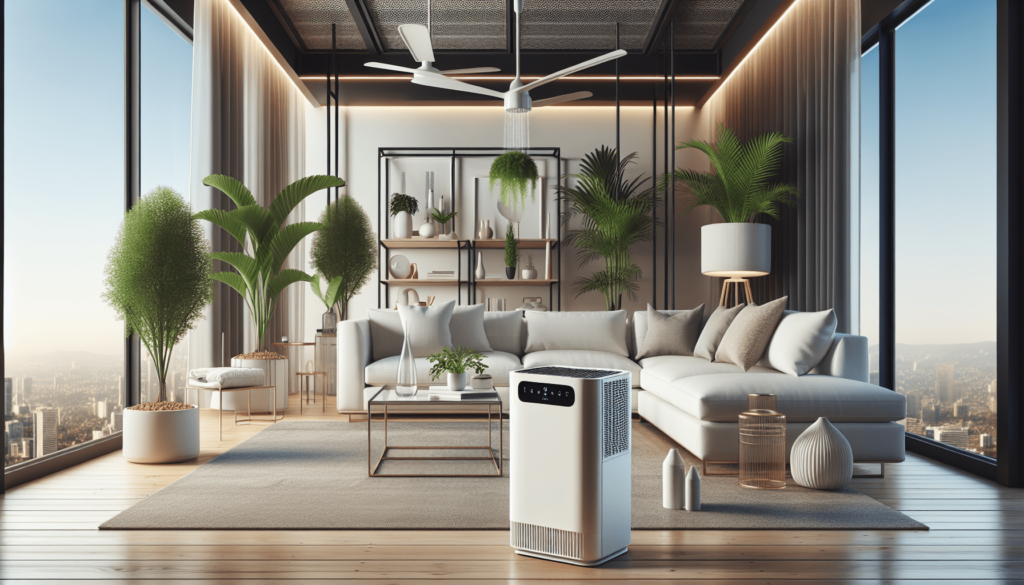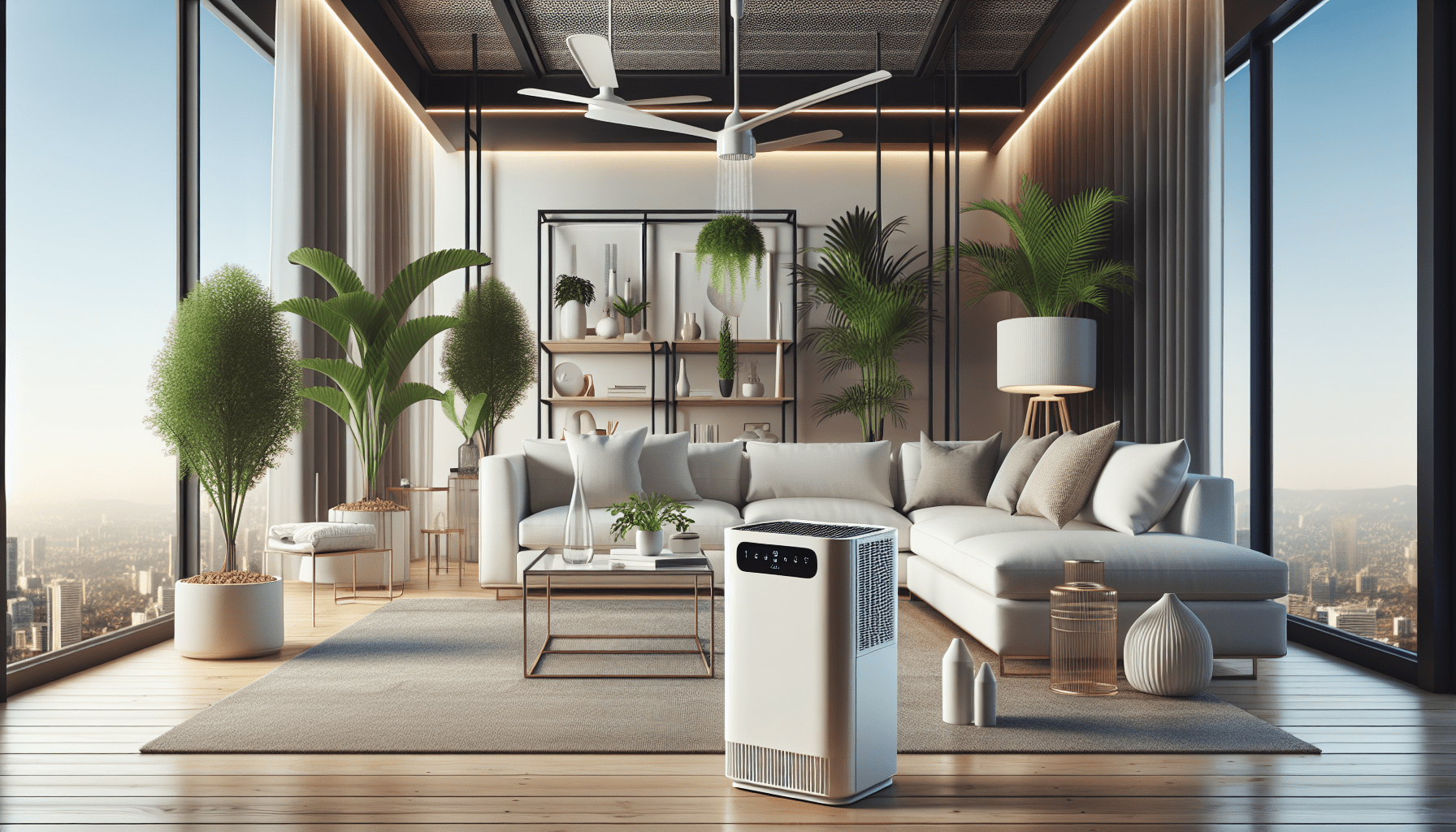Welcome to your comprehensive guide on “Understanding the Common Sources of Indoor Air Pollution in the Living Area.” In this article, you will explore various everyday items and activities that can compromise the air quality in your home. By identifying and mitigating these sources, you can create a healthier environment for you and your loved ones. Dive in and discover ways to breathe easier and live better in your living space. Have you ever wondered what’s in the air you’re breathing inside your home? Indoor air pollution can significantly impact your health and well-being, and it’s surprisingly more common than you might think! Understanding the common sources of indoor air pollution in the living area can help you create a healthier and safer environment for you and your family.
What is Indoor Air Pollution?
Indoor air pollution refers to harmful pollutants and particles that contaminate the air within our homes. These pollutants can come from various sources and contribute to health issues ranging from minor irritations to serious respiratory conditions.
Why Should You Care About Indoor Air Quality?
The air you breathe indoors can sometimes be more polluted than the air outside. Considering the time we spend inside our homes, improving indoor air quality is crucial for maintaining good health. Poor indoor air quality can trigger allergies, asthma, and other respiratory issues, so understanding its sources is the first step in managing and mitigating these pollutants.
Common Sources of Indoor Air Pollution
Combustion Sources
Combustion sources are a significant contributor to indoor air pollution. These include:
- Tobacco Smoke: If someone in your household smokes, the harmful chemicals released from cigarettes can linger in the air and on surfaces.
- Cooking Appliances: Stoves, ovens, and other cooking appliances release pollutants such as nitrogen dioxide and carbon monoxide.
- Fireplaces and Wood Stoves: These can introduce particulate matter and other pollutants into your living space.
- Heaters: Gas or kerosene heaters without proper ventilation can release dangerous levels of carbon monoxide.
| Combustion Source | Potential Pollutants |
|---|---|
| Tobacco Smoke | Nicotine, Carbon Monoxide |
| Cooking Appliances | Nitrogen Dioxide, Carbon Monoxide |
| Fireplaces/Wood Stoves | Particulate Matter, Carbon Monoxide |
| Gas/Kerosene Heaters | Carbon Monoxide |
Building Materials and Furnishings
Building materials and furnishings can off-gas volatile organic compounds (VOCs), contributing to indoor air pollution. Examples include:
- Paints and Coatings: Many paints and finishes contain VOCs that release into the air as they dry.
- Carpeting and Upholstery: New carpets and furniture can emit harmful chemicals used in manufacturing.
- Pressed Wood Products: Materials like particleboard and plywood often use adhesives that release formaldehyde.
| Material/Furnishing | Potential Pollutants |
|---|---|
| Paints and Coatings | VOCs |
| Carpeting and Upholstery | VOCs, Formaldehyde |
| Pressed Wood Products | Formaldehyde |
Household Products
Everyday household products can also contribute to indoor air pollution. These include:
- Cleaning Agents: Many cleaning products contain chemicals that can irritate your respiratory system.
- Air Fresheners: While they may make your home smell good, air fresheners often contain harmful VOCs.
- Personal Care Products: Certain sprays, perfumes, and hair products can release pollutants.
| Household Product | Potential Pollutants |
|---|---|
| Cleaning Agents | VOCs, Ammonia |
| Air Fresheners | VOCs |
| Personal Care Products | VOCs |
Biological Contaminants
Biological contaminants such as mold, bacteria, and pet dander are another source of indoor air pollution. These can exacerbate allergies and asthma.
- Mold: Grows in damp or humid areas, releasing spores into the air.
- Bacteria and Viruses: These can circulate through the air, especially in poorly ventilated spaces.
- Pet Dander: Tiny particles of skin shed by pets can trigger allergic reactions.
| Biological Contaminants | Sources |
|---|---|
| Mold | Damp Areas (bathrooms, basements) |
| Bacteria and Viruses | Poorly Ventilated Areas |
| Pet Dander | Pets (Cats, Dogs, etc.) |

How to Improve Indoor Air Quality
Improve Ventilation
One of the most effective ways to reduce indoor air pollution is by improving ventilation. This can be done by:
- Opening Windows: Allow fresh air to circulate through your home.
- Using Exhaust Fans: Kitchen and bathroom fans can help remove pollutants.
- Installing Air Exchangers: These systems can replace stale indoor air with fresh outdoor air.
Use Air Purifiers
Air purifiers with High-Efficiency Particulate Air (HEPA) filters can capture airborne particles, including dust, pollen, and pet dander. Make sure to choose an air purifier that is appropriate for the size of your living area.
Regular Cleaning
Keeping your living area clean can significantly reduce the amount of indoor pollutants:
- Vacuum Regularly: Use a vacuum with a HEPA filter to trap dust and allergens.
- Wash Bedding: Clean linens and curtains frequently to reduce dust mites.
- Reduce Clutter: Clutter can collect dust and make cleaning more difficult.
Choose Low-VOC Products
Opt for low-VOC or VOC-free products whenever possible. This includes:
- Paints and Finishes: Select products labeled as low-VOC.
- Cleaning Products: Choose natural or organic cleaning agents.
- Furniture: Look for furniture made with low-emission materials.
Control Moisture
Managing moisture levels can prevent the growth of mold and mildew:
- Use Dehumidifiers: These can help reduce humidity levels in your home.
- Fix Leaks: Address any water leaks promptly to prevent mold growth.
- Ventilate Bathrooms: Use exhaust fans or open windows to reduce moisture after showering.
Conclusion
By understanding the common sources of indoor air pollution in your living area, you can take proactive steps to improve the air quality in your home. From enhancing ventilation and using air purifiers to choosing low-VOC products and controlling moisture, there are numerous ways to create a healthier living environment. Making these small changes can have a significant impact on your overall well-being and the health of your loved ones. Remember, the air you breathe matters, so take action today to ensure it’s as clean and fresh as possible.

